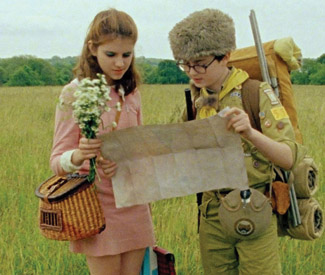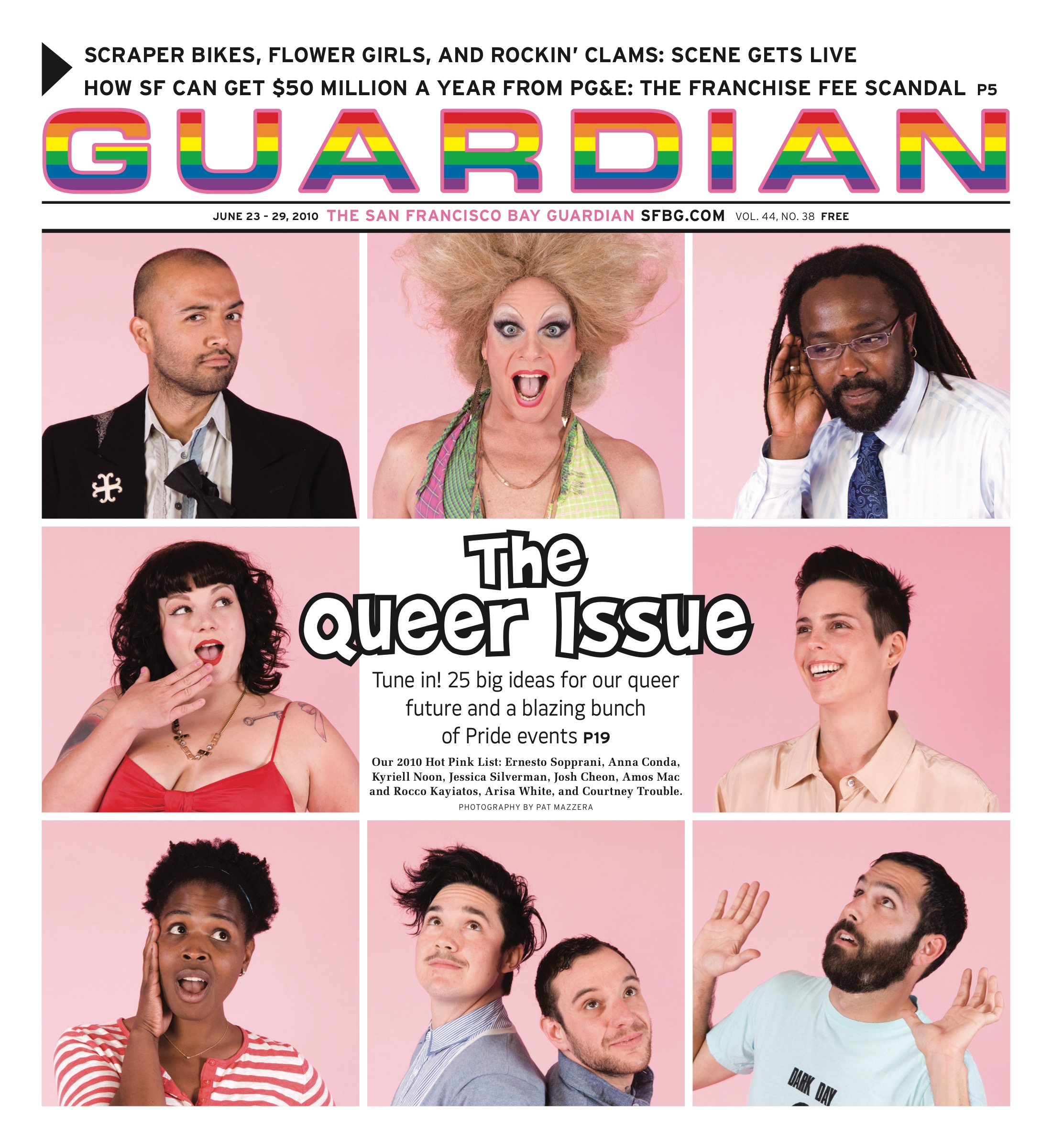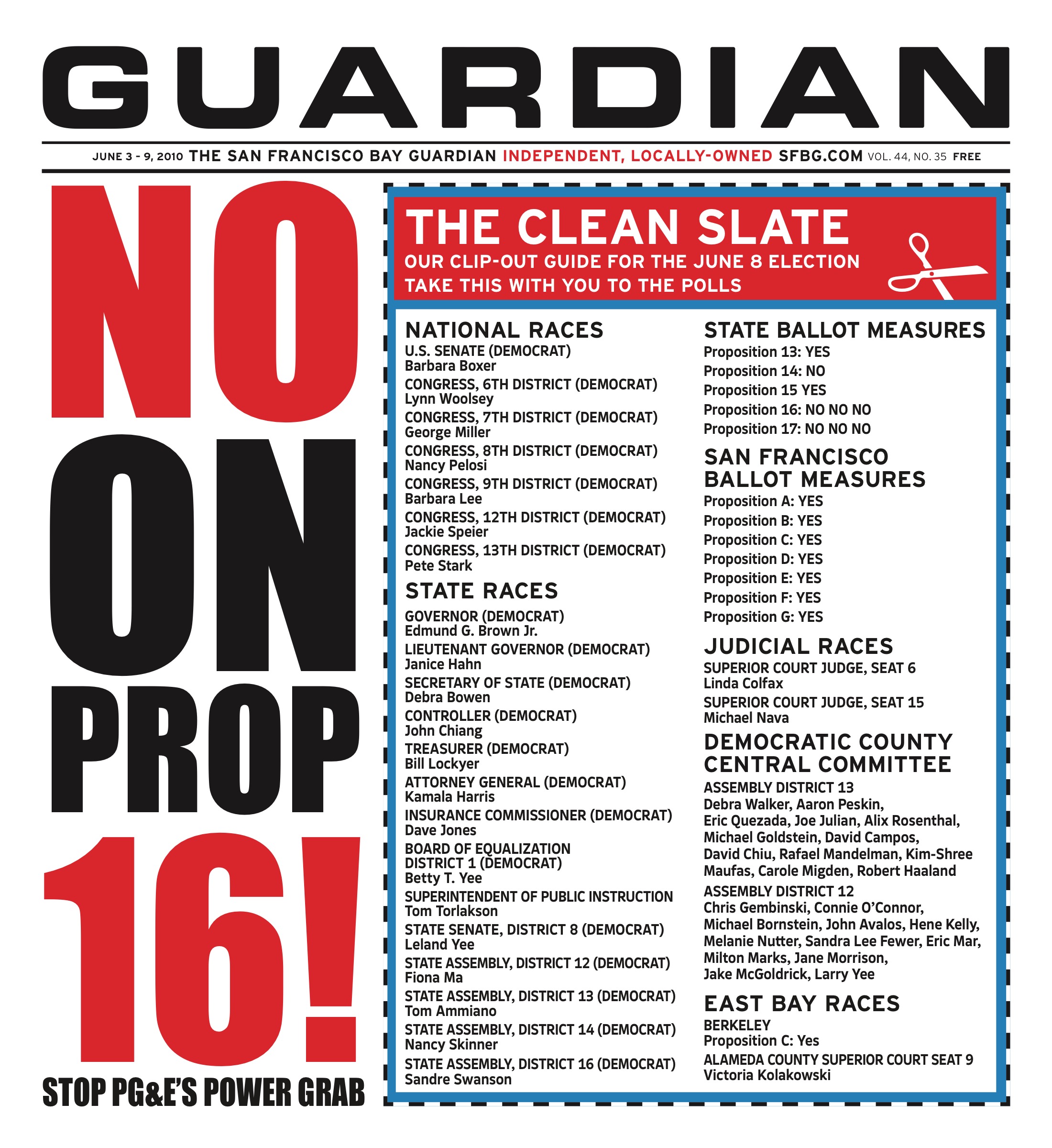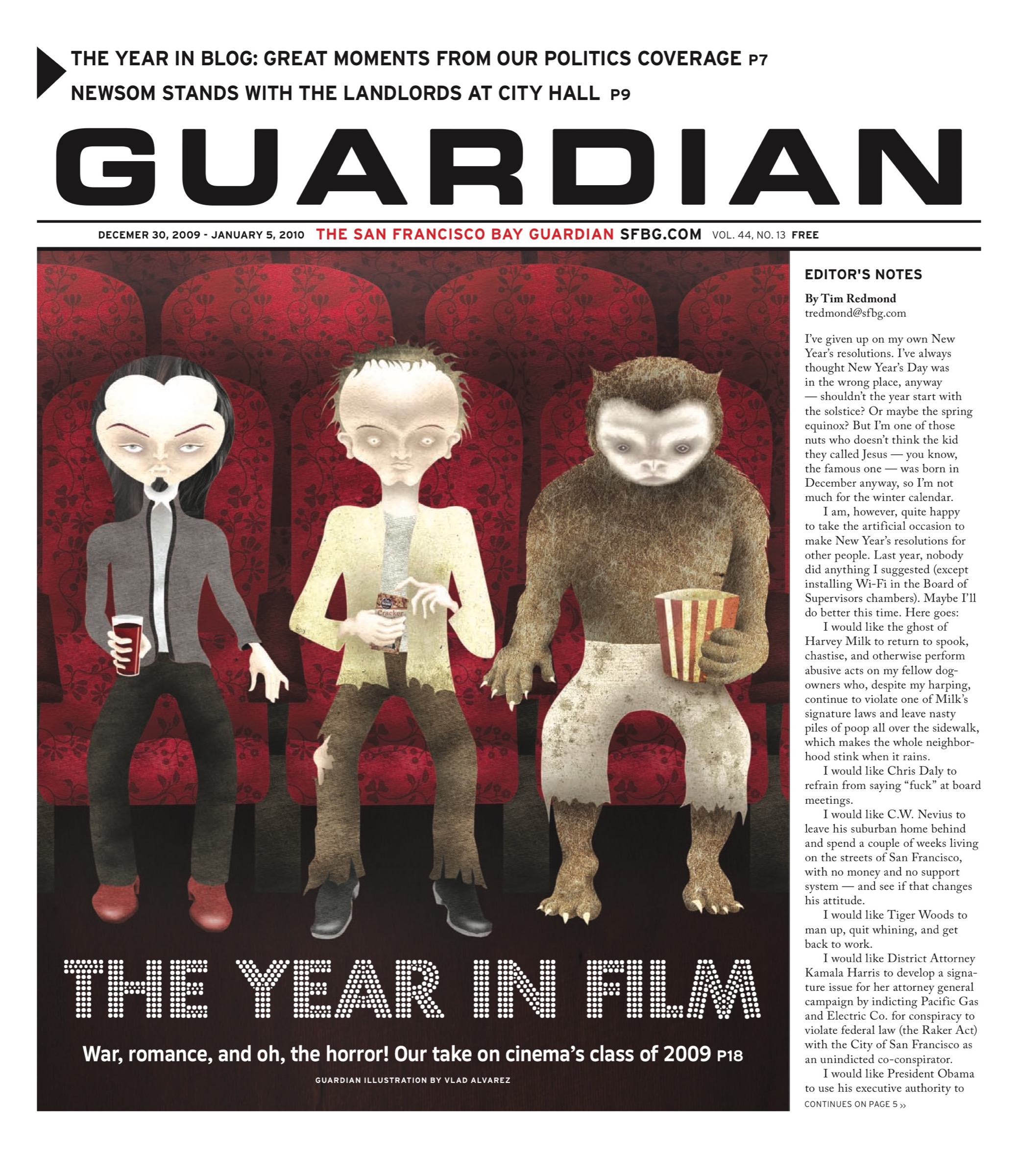› a&eletters@sfbg.com
A corpse is a corpse, of course, of course. And no one can talk to a corpse, of course. Unless, of course, that corpse is brought to you by the famous Mr. David Lynch. In this case the corpse gets up and shuffles away, walking the earth like something out of a Samuel Beckett play directed by George Romero.
My thirty-three-year practice of the Transcendental Meditation program has been central to my work in film and painting and to all areas of my life.
"Are you looking for an opening?" Look over here, if you dare, and make your entrée through a tableau of rabbit-headed domesticity complete with sitcom-style applause and a laugh track inserted at decidedly odd moments. Entrances and exits are everything in Inland Empire, which takes place in a universe so slippery your front door may no longer open into your living room but rather into a dark alleyway — and your identity might change if you step through.
So in July 1973 I went to the TM Center in Los Angeles and met an instructor, and I liked her. She looked like Doris Day.
"You have a new role to play?" Yes, you do, at the place where evil was born; your creepy new neighbor is more than happy to warn you of your imminent danger even as you stride around the ornate mansion that you and your violently jealous husband occupy. No matter, though. That new role is your big break, and your star turn in On High in Blue Tomorrows could mean you’ve finally stepped over the threshold into that magical land "where stars and dreams come true." Not coincidentally, it’s also where evil was born — and where hammy Southern accents go to die.
I call that depression and anger the Suffocating Rubber Clown Suit of Negativity. It’s suffocating, and that rubber stinks.
Federico Fellini’s 8 1/2 fantasy is Lynch’s almost three-hour New Nightmare, both a film and a studio lot overrun with elliptical numerical references: stages 4, 5, 6, 32, and 35; page 57. Where are we? Hollywood or Poland? And what time is it exactly? Is it 9:45 or just after midnight? Is it real time or remembered time, those two warring temporal spaces at the core of so many film noirs? Douglas Sirk–ian blue tomorrows are always just out of reach, but this is a rare instance in which the answer It’s only a movie isn’t very comforting — both viewers and characters seem trapped in a hellish real or imagined world that Lynch himself can’t or won’t explain. One thing is for certain: if you’re running along the Walk of Fame, it’s safe to say you’re in danger.
It’s so magical — I don’t know why — to go into a theater and have the lights go down. It’s very quiet, and then the curtains start to open. Maybe they’re red. And you go into a world…. It’s best on a big screen. That’s the way to go into a world.
Oh yes, Inland Empire was shot entirely on digital video. And it’s not that fancy-shmancy digital either. No, it’s crap digital. But it’s glorious crap — at once making the horror more potently ugly and profane and lending it the quality of gauzy impressionism. By the 4,000th squashed close-up of Laura Dern’s twisted face, you’re thinking there’s nothing so grotesque as a degraded image — see YouTube, tweaked-out coverage of the Iraq War. Then Lynch’s digital expressionism rallies, the incandescent flares of pixilated light at the twilight’s last gleaming. Everything is illuminated unless it’s not. A cut is not a cut but rather a buzzing lightbulb; a long shot is not a long shot but instead a menacing corridor.
I love Los Angeles.
Delivering her lines like a long-lost relative of Maria Ouspenskaya in The Wolf Man and lensed and styled to look like a cross between Jane Wyman and an evil squirrel, Grace Zabriskie plays the ultimate nosy neighbor — one who inaugurates this pleasure and boredom zone by opening a window into the leading lady’s future. Her director has a digital-video eye for combinations of lemon and gray as well as cheap Pepto-Bismol pinks and barf tones — he can make a palatial mansion look as grim as Eraserhead‘s dead living room. This is a movie about the horror of set design, the terror of lamps. Lynch can’t help but look for and stare down the rabbit hole, that spot where it’s hard to disappear, that place just down the way, the space that’s tucked back, difficult to see from the road — the lost highway that connects to the dark hallway and the innumerable nooks and crannies of negative space. As always, he fixates on the sinister brutality in pop’s lexicon; this time, instead of candy-colored clowns tiptoeing into bedrooms, it’s hearts wrapped up in clover.
It was the light that brought everybody to LA to make films in the early days. It’s still a beautiful place.
Is Inland Empire really The Passion of Laura Dern? Yes, this is Dern’s movie, her face being cut up in nearly every scene ("brutal fucking murder," as one character puts it), and Laura, what do you make of it? Are you in there? A spotlight trained on you, long and lean, running horizontally through the night in silent slow-motion, then toward the camera, then fast, then screaming like Rita Hayworth in the mirrors at the end of The Lady from Shanghai, but for three hours. Come back, Bette Davis and Joan Crawford, Gene Tierney and Mary Pickford, Judy Garland and Barbara Stanwyck, Joan Fontaine and Natalie Wood, Marlene Dietrich and Marilyn Monroe: Lynch wants to make you stars again! A coast-to-coast search will soon be under way for the shot-for-shot remake of Inland Empire.
And sometimes things happen on the set that make you start dreaming.
No doubt, as the fate-strapped actress Nikki Grace, Dern makes an exquisite corpse. Oh, wait — she’s actually Susan Blue, Nikki’s alter ego and the character she plays in her latest film, a Southern potboiler that also stars Devon Berk (Justin Theroux) as Billy Side. Susan wanders through her fever dream screaming desperately for Billy, who always seems to be around the next darkly lit corner but rarely materializes. As the giant talking bunnies say, it all has "something to do with the telling of time." Of course, Nikki and Susan might have just fused into some kind of Lynchian-Freudian beast. The infamous Lynch psychofugue. It’s an assumption borne out by a third Dern personality, a ball-busting broad with a mysterious bruise on her lower lip who permanently totes a rusty screwdriver.
What struck me about O.J. Simpson was that he was able to smile and laugh.
Dern’s performance is like a disco ball in a hall of mirrors; it’s rarely clear which character she’s playing, but she’s never less than entirely committed. One minute she’s a kittenish starlet, long legs stretched out across a sun-drenched gazebo. The next she’s a haggard has-been with a busted lip, climbing a set of dingy steps into a dark office, where she tells the man seated there — who is he exactly? And who’s he talking to on the phone? — about how she once thwarted a rapist by plucking out one of his eyeballs.
I don’t necessarily love rotting bodies, but there’s a texture to a rotting body that is unbelievable. Have you ever seen a little rotted animal?
"Hey — look at me and tell me if you’ve known me before." This line repeats throughout Inland Empire, and yeah — there’s definitely David Lynch déjà vu at work here: Mulholland Drive‘s twisted Tinseltown, Twin Peaks‘ slutty-girl world, Blue Velvet‘s dark suburbia, Wild at Heart‘s seedy glamour and endless Dern worship. Plus the inevitably singular moments: Where, before or since, has a splattered bottle of ketchup foreshadowed a murder? Committed on the exact square foot of cement that encases Dorothy Lamour’s Hollywood Boulevard star?
I love seeing people come out of darkness.
Just as it’s tempting to view Mulholland Drive‘s semiuseless dude passages as a simple opportunity for Lynch to spank Quentin Tarantino, this time around his humane take on Eastern Europe might be a genial yet hostile retort to Eli Roth. The director himself won’t say anything about his movies or their influences — he’ll never fess up that Mulholland Drive is essentially Carnival of Souls moved from Salt Lake City to showbiz central, even if one of Inland Empire‘s most terrifying moments echoes the zombies-running-at-the-camera shock tactics of Herk Harvey’s 1962 cult classic. (The scariest Dern close-up adds more voltage to the peak jolt of Takeshi Shimizu’s video version of Ju-on, which goes to show, what comes around goes around.) Inland Empire‘s new capitalist whores might be talking with or back to the ones in Lukas Moodysson’s Lilya 4-Ever and Ilya Khrjanovsky’s 4, a recent movie with an amazing sound design overrun by Lynchian subsonic rumbles.
Fellini had me sit down. He was in a little wheelchair between two beds, and he took my hand, and we sat and talked for half an hour…. That was Friday night, and Sunday he went into a coma and never came out.
Inland Empire is more than long enough to have some dodgy or cringeworthy moments, which include a fair amount of bad acting by models, the jarring soundtrack misfire — rare for Lynch — of Beck’s "Black Tambourine," and a final lip sync of Nina Simone’s "Sinnerman." No one can double for the late Dr. Simone! But Dern, her dirty strands of hair looking like facial wrinkles and bruises, can double over endlessly. By the time she’s on Hollywood Boulevard, caught between a young female junkie and a homeless untouchable calmly discussing how to get the bus to Pomona, she’s suffered a shattering fall from the confines of her lavish, hermetically sealed estate in the recesses of the Inland Empire (both the one in her zip code and the one in her mind).
I went to a psychiatrist once.
"You gotta swing your hips, now. Come on, baby. Jump up. Jump back. Well, now, I think you’ve got the knack. Now that you can do it, let’s make a chain, now. (Come on baby, do the Loco-motion.) A chug-a chug-a motion like a railroad train, now. (Come on baby, do the Loco-motion.) Do it nice and easy, now, don’t lose control: a little bit of rhythm and a lot of soul. So come on, come on, do the Loco-motion with me."
So I say: Peace to all of you. *
All the sentences in italics are from Catching the Big Fish: Meditation, Consciousness, and Creativity, by David Lynch (Tarcher/Penguin, 2006).
INLAND EMPIRE
Opens Fri/9
See Movie Clock at www.sfbg.com
www.inlandempirecinema.com
>










